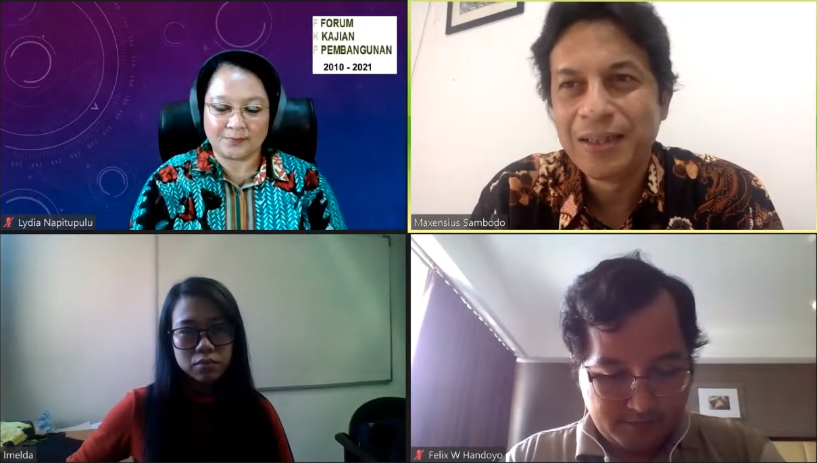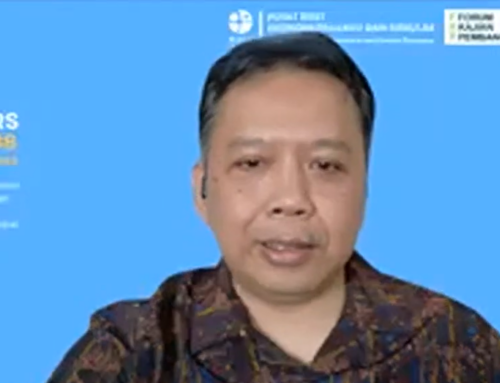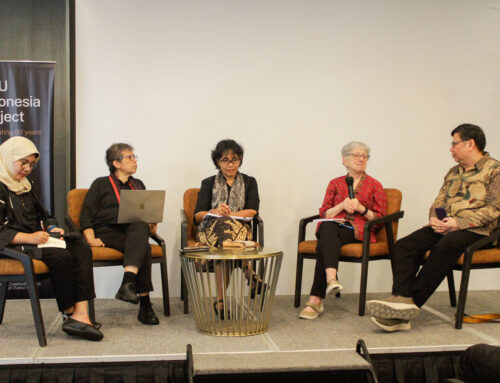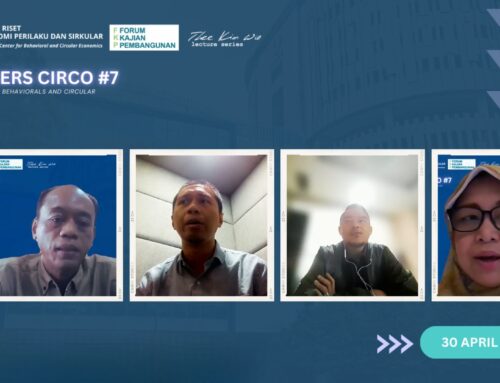FKP hosted by Indonesian Institute of Sciences (LIPI) with Maxensius Tri Sambodo (LIPI) and Imelda (Department of Economics, Carlos III University, Spain). Thursday, 20 April 2021.
KEY POINTS:
- The share of Indonesia’s renewable energy in the supply of primary energy is still low. Moreover, the growth of renewable energy tends to decline, while the growth of conventional energy continues to increase. The energy sector will be the largest emitter of carbon unless the government is committed to removing barriers to renewable energy. This raises the question of what are the barriers to implementing low carbon development in Indonesia.
- Technology and governance barriers were found to have a significant effect both on economic barriers and on solving renewable energy barriers. From the governance barriers, almost all of the provincial programs seem to have stalled at the conceptual level, partly due to unstable political conditions. In terms of technological barriers, renewable energy investment may also be considered less attractive due to operational inefficiencies, including the more complex maintenance procedures.
SUMMARY
- Indonesia has pursued low carbon development (LCD) to prevent the adverse effects of climate change. The LCD policy has been integrated into the National Medium Term Development Plan (RPJMN) 2020-2024. Based on the commitment of national contributions, the largest source of emissions in 2030 will be from the energy sector. The large emission by the energy sector is due to low share of Indonesia’s renewable energy in the supply of primary energy (only 8.5% in 2018). Moreover, the growth of renewable energy tends to decline, while the growth of conventional energy continues to increase. This raises the question of what are the barriers to implementing LCD in Indonesia. The energy sector will be the largest emitter of carbon unless the government is committed to removing barriers to renewable energy. Maxensius Tri Sambodo from the Indonesian Institute of Sciences (LIPI) presented a study on this issue entitled “Breaking down barriers to low carbon development in Indonesia: the spread of renewable energy”. The study included a survey of 92 experts from energy-related backgrounds in a variety of occupations using a mixed methods approach.
- From the survey, barriers to LCD are divided into several categories based on a previous study (Seetharaman et al., 2019). The findings on each category of barrier based on the survey are described below:
- Socio-cultural barriers: There is a shortage of skilled and experienced workers in renewable energy projects. In addition, ineffective rotation of local government officials has resulted in communication barriers and knowledge gaps.
- Economic barriers: The number of investors in the renewable energy sector is lower than the conventional energy industry. There is a common assumption among investors that renewable energy projects carry a high risk which could potentially lead to their reluctance to invest in this area.
- Technological barriers: The absence of a smart grid infrastructure that integrates conventional energy and renewable energy is the biggest technological barrier according to the respondents. The lack of smart grid integration has hindered the adoption of renewable energy. Also, entrepreneurs and associations stated that the role of R&D in energy storage technologies is still limited.
- Governance barriers: complex bureaucratic procedures are a major barrier to implementing LCD. Most respondents generally considered sectoral egos among government agencies to be the most dominant barrier to governance. programs and activities tend to be partial, and tend to represent the missions of the respective provincial government agencies.
- Following the qualitative identification briefly described above, the study then quantitatively identifies the main barriers to renewable energy adoption. From Partial Least Square – Structural Equation Modeling (PLS-SEM) analysis, technological and governance barriers have a significant effect both on economic barriers and on solving renewable energy barriers. From the governance barriers, almost all of the provincial programs seem to have stalled at the conceptual level or have not yet progressed to the implementation stage, partly due to unstable political conditions. In terms of technological barriers, renewable energy investment may also be considered less attractive due to operational inefficiencies, including the more complex maintenance procedures required to produce renewable energy compared to fossil fuel energy.
- Meanwhile, socio-cultural and economic barriers do not have a significant effect on solving barriers to the application of LCD. The socio-cultural values of the local community may not be strong enough to generate shared social commitment to support (or oppose) LCD. In addition, economic constraints may not directly influence the adoption of LCDs. However, these estimates should be considered carefully given the predominance of fossil fuels in Indonesia.
- Breaking down technological barriers and governance difficulties can enable more efficient procedures, higher stakeholder satisfaction, more practical & useful R&D, and lower cost renewable energy projects. The study suggests that eliminating complex bureaucratic procedures and eliminating sectoral egos is necessary to create more synergistic and effective policies, and to reduce the initial costs of the LCD program. Although the path analysis does not show the direct effect of economic constraints on LCD, economic aspects can still be a significant intervening variable for technology and governance barriers affecting LCD. This may be related to claims that the high costs of developing renewable energy can easily be resolved in the future.
- Imelda, a researcher at the Department of Economics, Carlos III University, Spain, provided some comments to strengthen the publication of this research. She suggested that a discussion of the strength of the research methodology (as opposed to other methods) can be discussed. Further, it is important to provide a brief snapshot about the key contributions of this paper to the existing knowledge. Also, some conclusions of the study need to be carefully reevaluated due to the limited evidence provided by the paper.





